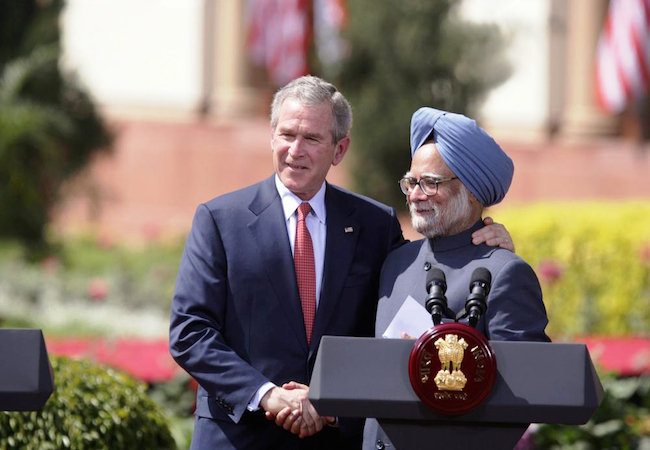Indo-US nuclear deal and its implications

By Saima Afzal
The 21st century is considered a landmark in the history of Indo-US strategic relationship; it indicates the major shift in foreign policy of US as well as India. US supported India for becoming strong power in the region by favoring India in obtaining waiver from non-proliferation regimes with special reference to strategic trade with US and world.
USA modified her municipal laws for granting civil nuclear technology. USA also assisted India for getting approval of unique “waiver” from International Atomic Energy Agency (IAEA) and Nuclear Supplier Group (NSG) for civilian nuclear trade. Now USA is trying to help India in becoming a permanent member of NSG and if this happens it would be first non signatory country of Non-Proliferation Treaty (NPT) member of NSG.
The framework of this deal was a joint statement issued by the US President Bush and Indian Prime Minister Manmohan Singh on 18 July 2005, under which India agreed to separate it civil and military facilities and to place her civilian nuclear program under IAEA safeguards, and in exchange the US concurred to full support of India towards civilian nuclear cooperation. US lifted three decades long arms embargo on India to initiate this deal.
On March 2006 India promised to place fourteen out of twenty two nuclear reactors under IAEA safeguards permanently. However, still the deal is in limbo, now the US and India has established an Inter-agency Contact Group to find out the outstanding liability and technical issues to fast track the implementation. During recent visit of Indian Prime Minister Modi to USA, after meeting with President Obama he said “Both of us are committed to taking forward the civil nuclear partnership agreement. We are serious about resolving at the earliest issues relating to civil nuclear energy cooperation. This is important for India for meeting energy security needs”.
Analysts viewed Indo-US strategic partnership a paradigm shift in foreign policy of India and US. However, due to this deal US did ground work which benefitted India as it would get recognition as defacto Nuclear Weapon State without signing of NPT. Indian nuclear program is plutonium based after getting civilian nuclear technology from the US, India would overcome the shortage of uranium and get rid of denial technology and isolation from the world. Apparently, US nuclear deal with India is for civilian purpose but covertly there are different motives in this transaction.
Firstly, US want to balance China’s power and to contain her from emerging regional power. Secondly, India considers her a largest democratic country like US that’s why United States favors strategic relationship with her and supports its integration in the NSG. Lastly, US is enthusiastic to build up projects with India. Pakistan being a front line ally of US in war against terrorism has not received any such kind nuclear energy deal from Washington. Some experts say this apparent U.S. favoritism toward India could increase the nuclear rivalry between the intensely competitive nations, and potentially raise tensions in the already dangerous region.
26 January is commemorated as Republic day because India adopted her first constitution on that day to replace 1935 British India Act. Mr.Modi has invited President Barak Obama as chief guest of the ceremony on Republic Day. However, India always invites those states as chief guest on her Republic Day with whom she has defense alignment, as in 2007 Russian President Putin visited India for celebration and the following year France’s President Nicolas Sarkozy was the chief guest because India has bought aircraft from both states. Now US is the largest arms supplier of India. US secretary of State John Kerry said that “Apart from cooperation on climate change, clean energy, defense, and economic partnership, the civil nuclear agreement will also be high on the agenda. India could push the U.S. to support its bid for membership to the Nuclear Suppliers Group, and the two countries are expected to renew their 10-year defense framework pact during Obama’s visit”.
There can be following implications of Indo-US nuclear deal for the south Asian states. India is desirous to become a hegemonic power of South Asia and Indian dreams can come true of by getting more nuclear technology. It would disturb the balance of power and equilibrium in South Asia and impact on Pakistan’s nuclear deterrence. There are prospects of arms race in the region and many important issues can be neglected. According to the Non-Proliferation Treaty there are only five recognized nuclear weapon states and India would be recognized as a defacto nuclear weapon state, Indo-US nuclear deal completely undermines the spirit of NPT.
Pakistan should develop it minimum credible deterrence capability and look up to China for getting technology and strategic partnership but would not go in arms race.




